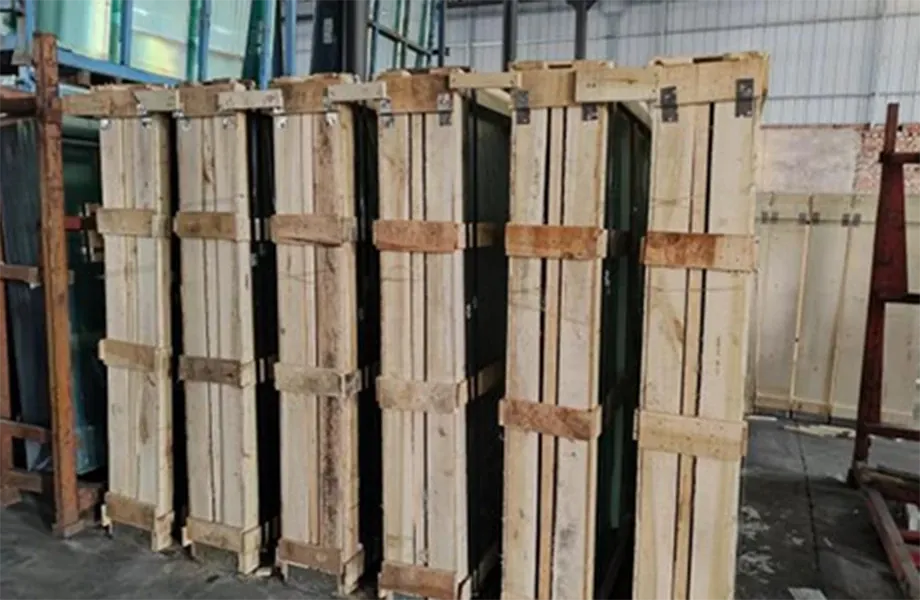Dec . 09, 2024 21:58 Back to list
Understanding the Benefits of Insulated Glazing for Energy Efficiency and Comfort
The Benefits and Importance of Insulated Glazing
Insulated glazing, commonly referred to as double glazing or triple glazing, has become an essential feature in modern building practices and architectural design. It involves the use of two or more glass panes separated by an inert gas-filled space, which significantly enhances thermal insulation and energy efficiency in residential and commercial properties. As energy conservation becomes increasingly critical in today’s world, insulated glazing presents a viable solution for reducing energy consumption and enhancing comfort within buildings.
Understanding Insulated Glazing
At its core, insulated glazing comprises multiple layers of glass. The space between these layers is often filled with argon or krypton, gases known for their insulating properties. This design not only minimizes heat transfer but also reduces noise pollution. The result is a building environment that remains warmer in winter and cooler in summer, leading to greater comfort for occupants.
Energy Efficiency and Cost Savings
One of the most significant advantages of insulated glazing is its ability to improve energy efficiency. Traditional single-pane windows allow a considerable amount of heat to escape, leading to increased reliance on heating systems. In contrast, insulated glazing can reduce heat loss by up to 50% compared to single-pane windows. This reduction in heat transfer translates to lower energy bills for homeowners and businesses alike.
Moreover, buildings equipped with insulated glazing often experience increased property value. Potential buyers are increasingly looking for energy-efficient features, and homes with double or triple glazing are more attractive in the real estate market. Investing in quality insulated glazing can yield substantial long-term savings on energy costs while enhancing the property’s overall marketability.
Environmental Impact
insulated glazing

As the global focus on climate change intensifies, improving energy efficiency in buildings has become paramount. Insulated glazing plays a crucial role in reducing a building's carbon footprint. By limiting the need for heating and cooling, these windows contribute to lower greenhouse gas emissions from power plants. Choosing energy-efficient building materials, such as insulated glazing, is an effective way to embrace sustainable building practices and contribute to a healthier planet.
Noise Reduction
In addition to thermal insulation, insulated glazing provides excellent noise reduction capabilities. The space between the glass panes acts as a barrier that diminishes sound transmission, making it ideal for properties situated in noisy environments, such as urban areas or near highways. This benefit enhances the quality of life for occupants, providing them with a quieter, more peaceful living or working environment.
Comfort and Aesthetic Appeal
Insulated glazing not only enhances comfort but also maintains the aesthetic appeal of a property. With advancements in technology, manufacturers now offer a variety of designs and finishes, allowing homeowners and architects to choose glazing that complements their overall design while providing functional benefits. Low-emissivity (low-e) coatings can be applied to the glass to improve thermal performance without compromising clarity or appearance.
Furthermore, the ability to let in natural light without excessive heat loss or gain allows for brighter interiors that can positively influence mood and productivity. This blend of beauty and functionality is why insulated glazing is increasingly favored in both residential and commercial architecture.
Conclusion
In an era where energy efficiency and environmental sustainability are vital, insulated glazing stands out as a practical, cost-effective solution. Its energy-saving capabilities, noise reduction benefits, and aesthetic versatility make it an indispensable component of modern architecture. As more property owners and builders recognize the advantages of insulation, the demand for insulated glazing is likely to continue to grow, paving the way for a future where buildings are not only more energy-efficient but also more comfortable and environmentally conscious. Embracing insulated glazing is not merely a choice for better living conditions; it is an important step toward a more sustainable and energy-efficient world.
-
Safety and Style with Premium Laminated Glass Solutions
NewsJun.24,2025
-
Reinvents Security with Premium Wired Glass
NewsJun.24,2025
-
Premium Float Glass Line for Modern Architecture
NewsJun.24,2025
-
Low Emissivity Glass for Energy-Efficient Architecture
NewsJun.24,2025
-
High-Performance Insulated Glass Solutions for Modern Architecture
NewsJun.24,2025
-
Elevates Interior Style with Premium Silver Mirror
NewsJun.24,2025
Related PRODUCTS














